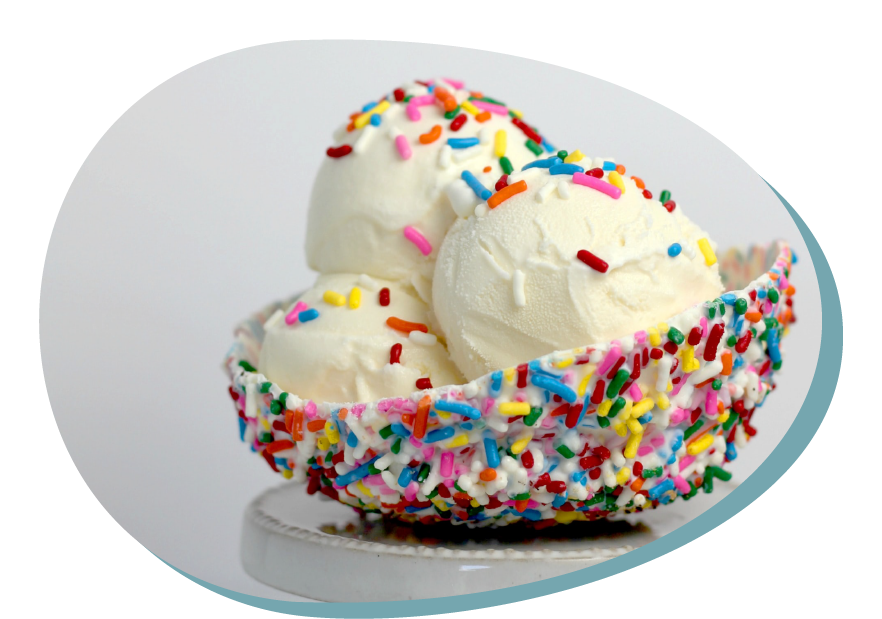Magic ice cream
Type of resource: website
Web address https://blog.giallozafferano.it/allacciateilgrembiule/gelato-nel-sacchetto/
Language: EN
Description
Exploring the transition from liquid to solid state
Scientific concept introduced
liquid, solid, transition from liquid to solid state
Creative and critical thinking
Critical thinking:
– analysis
– observation
Creative thinking:
– curiosity
Mathematical reasoning
Measuring
Scientific thinking
– asking questions
– making predictions
– experimenting
– analysing results
Learning how to learn
design and carry out an experiment
investigate the transition from liquid to solid
discuss the experiment and draw conclusions
document the process
listen and follow instructions
collaborate in a group
create something ”magical”
Additional
– Actively participating in the teacher’s execution of the experiment
– Predicting possible results
– Becoming familiar with the ingredients
– Choosing the most suitable tools
– Concluding the activity with tidying up
Magic ice cream
Overall aims
– enable pupils to explore the transition of matter from a liquid to a solid state.
– developing pupils’ skills in listening and following instructions
– developing pupils’ ability to organise themselves and work in groups
– developing pupils’ ability to document their work
– stimulating group cohesion and positive relationships between pupils
Vocabulary – keywords should be understood
freezer bag, solid, liquid, thermometer, measuring cups, salt, cups
Expected learning outcomes (operational aims)
– the child/student will be able to:
– conduct an experiment
– investigating the transition from liquid to solid state
– discuss the experiment, draw conclusions and document the work done
– the child/student will have developed the ability to:
– listen and follow instructions
– collaborating in a group
– scientific observation
– creating ‘something magical
STEM skills – to which the learning unit is related to
CORE STEM SKILLS
carrying out the experiment
exploring the transition from liquid to solid state
ask questions
analysing the results of an experiment
ADDITIONAL SKILLS
knowing how to work in a team
hand-eye coordination
listening and understanding
Teaching methodologies/activity outline
Introduction:
1. Show the children/young people the material they will need to do the experiment. Then say: “What are we going to do with this material?
2. We are going to do an experiment called “the magic ice cream”.
3. The experiment will be used to better investigate the change of state of matter from liquid to solid.
Activities:
The teacher explains the experiment to the pupils. He or she will then hand out a sheet of paper with the instructions to follow and the material needed for the experiment. The pupils are then asked to work in groups. Each group will use its own materials.
Material:
50 g sugar
100 ml milk
250 ml whipping cream
One teaspoon of vanilla or vanilla flavouring
Small freezer bag
Large bag for freezing
3 ice cubes
Thermometer
5 tablespoons coarse salt
1 clip
Cups and spoons to eat your ”surprise
Instructions:
– Add sugar, milk, whipping cream and vanilla to the small freezer bag and close the bag.
– Put the ice in the large freezer bag and measure the temperature of the ice with a thermometer.
– Pour coarse salt into the ice bag.
– Place the small freezer bag inside the large freezer bag containing the ice and salt. Then close the bag
– Gently move the large freezer bag from side to side.
– Continue to rock the large freezer bag for about 10-15 minutes.
– Remove the small freezer bag and eat your magic ice cream!!!!
Conclusions:
At the end of the experiment, the teacher will try to analyse the experience through debriefing, and each participant will relive what he or she has experienced from an emotional point of view, listening and comparing with the others, in order to better understand his or her own thoughts and those of his or her classmates.
Assessment of learning
The teacher, through direct observation, will assess the ability to cooperate at both group and individual level.
By means of stimulating questions, it will assess the children’s ability to use critical thinking, to reflect on the data collected, to formulate, in turn, follow-up questions, to explain the transition from liquid to solid state.
Equipment and materials to be used in learning unit (tools, ingredients etc)
Sugar
Milk
Whipping cream
Vanilla or vanilla flavouring
Small freezer bag
Large bag for freezing
Ice
Thermometer
Coarse salt
Measures and spoons
Cups and spoons for eating
Kind of setting
Science laboratory or classroom to which pupils belong
References – source
GELATO NEL SACCHETTO
Photo by sheri silver on Unsplash
Magic ice cream
1. Usefulness for STEM education – integrating content of different disciplines
Cross-curricular character of the resource

The range of S-T-E-M subjects included

The presentation of possibilities of including artistic activities (STEAM approach)

2. Expected learning outcomes
Consistency (links) with preschool core curriculum

Communicativeness of description

3. Methodology of teaching
Clarity, communicativeness of instructions for teachers

Meaningful learning – using practical life problems

Original idea

The level of ease in implementing the methodology to preschool age children

The level of ease in preparing necessary ingredients, materials and equipment needed

4. Sustainability
Ecological characteristics of materials/ results

Supporting healthy eating habits

Low ecological footprint

Possibilities of inclusion (respecting cultural diversity and food intolerances)

5. Class management
Using differentiated forms of work – individual, team work etc.

Individual work

Team work

Whole group
6. Time management

Short activity (10-15 minutes)

Medium activity (20-30 minutes)

Long activity (1 hour or more)

Very long activity (1 day or more)
PDF: https://www.printfriendly.com/p/g/FRz5zt

